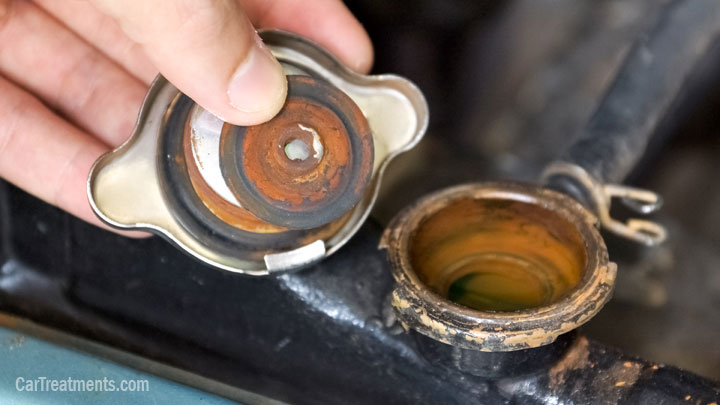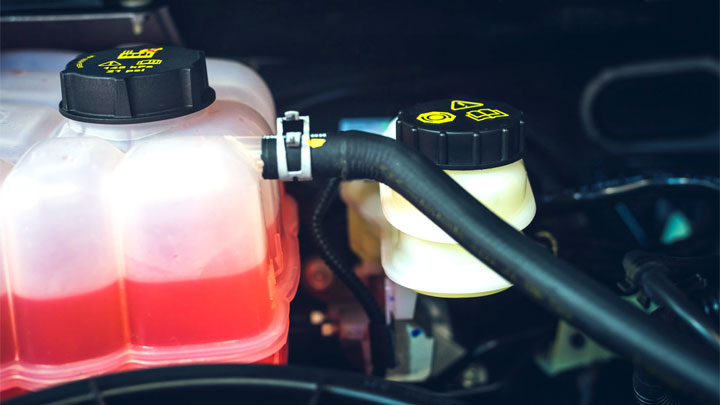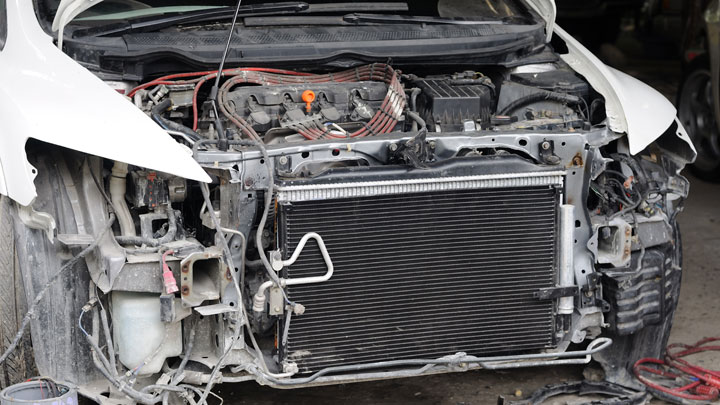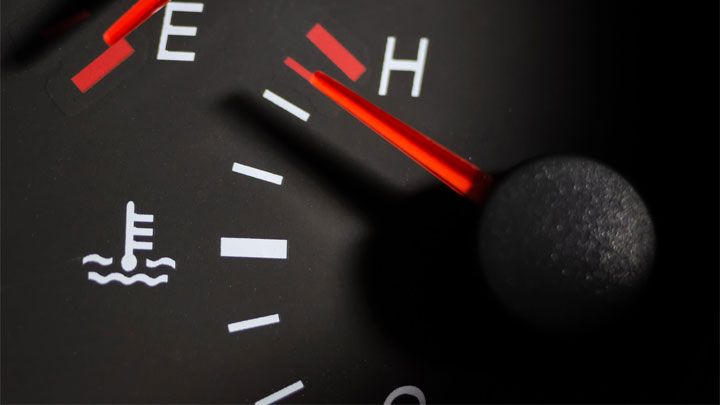How To Repair A Radiator Hose
Last Updated on October 12, 2021
Radiator hoses convey engine coolant to and from the radiator. The upper hose carries hot coolant from the engine to the radiator. The lower hose carries the cooled fluid dorsum to the water pump and then dorsum into the engine. The h2o pump circulates this coolant continuously while the engine is running.
Looking for a good online repair manual?
Click Here for the 5 best options.
These hoses are designed to remain flexible across a temperature range from nigh -30 degrees to 250 degrees F. For racing applications, high performance hoses can provide an even wider temperature capability.
Hose construction typically includes a layer of aramid, polyester or Nomex fibers to help the hose endure pressure. Hoses on today's cars can final well over 100,000 miles, sometimes enduring to twice that value.
Hoses, both upper and lower, may contain an internal coil spring to help minimize risk of hose collapse. However, a radiator hose plummet can occur nether certain conditions and left unchecked, it tin cause astringent engine impairment. Fortunately, the fix is usually both cheap and easy.
What is a "Collapsed" Radiator Hose?
A complanate radiator hose looks like a long skinny flat tire. Very noticeable. I or both hoses may go apartment if the cooling system experiences a localized or complete vacuum (negative pressure) condition.
Why has My Radiator Hose Collapsed?
There are two possible reasons for a complanate radiator hose:
- Reason i – A vacuum inside the coolant arrangement volition cause one or both radiator hoses to plummet. This negative pressure will occur when the engine has been shut off and the normal return menses of coolant from the expansion tank is blocked. This vacuum problem may be caused by #1 and #ii below.
- Reason two – Restricted flow through the radiator (a chock-full radiator) can cause the lower radiator hose to collapse. Run into cause #iii below.
#1 – Faulty Radiator Cap

The kickoff and most common cause of a complanate radiator hose is an inoperative ane fashion valve in the radiator cap. This tin occur due to age or due to contamination of the radiator cap by deposits. Follow these steps if you find a complanate hose, either superlative and/or bottom.
Circumspection
Never attempt to remove the cap when the engine is hot.
- With a cool engine, remove the radiator cap.
- If upon removing the cap the hose (or hoses) quickly render to normal size the trouble is either the radiator cap or a blocked vent hose.
- Examine the cap. If it is coated with gummy deposits it may be possible to clean it. Using dishwashing detergent and a soft toothbrush, clean abroad all deposits. Rinse the cap thoroughly. Wipe whatsoever deposits from the mating surfaces on the radiator (or expansion tank) with a clean shop towel.
- Reinstall the cap.
- Offset the car, warm the engine, and permit it to run until antifreeze flows into the expansion tank. A short drive can speed up this process. Shut off the engine and after it cools downwards confirm that the hose(southward) no longer are collapsing.
- If hose collapsing even so occurs, replacement of the defective cap may be required. New cap prices range from about $8 to $25 at your local or online automobile parts store.
Using Dex-Absurd Antifreeze or Terminate Leak?
Both Dex-Cool and Stop Leak deposits have a tendency to build up in the radiator cap mechanism. If with a collapsed hose you remove the radiator cap (when the engine is cool), and information technology is gummed up, ane or both of these products may exist the cause. Either follow the cleaning steps to a higher place or replace the cap.
When using Dex-Cool or End Leak, checking the radiator cap for deposits at each oil modify and cleaning it as necessary is recommended.
#2 – Blocked Expansion Tank Hose

While a blocked vent hose is a relatively uncommon event, if it happens, it can prevent air flow dorsum into the expansion tank as the engine cools. This volition mimic the problem that occurs with a gummed up radiator cap.
As with a faulty radiator cap, follow these steps:
- After allowing the engine to absurd downward, remove the radiator cap.
- Find the collapsed hose(s). They should return to normal size.
- Examine the cap. If it is free of deposits, the problem is likely to be a blocked vent hose.
- To check for a blocked hose, detach the vent hose from the fitting on the expansion tank. Practice this carefully because expansion tanks are generally plastic, and yous don't want to suspension this hose fitting.
- Insert a clean plastic drinking straw into the cease of this hose. (A stiff plastic reusable child's straw will piece of work best.) Accident through this harbinger. Any brake will be axiomatic.
- Generally, the vent hose volition exist routed downward through several clamps and terminate below the engine. Remove this hose from its retaining clamps and using your garden hose, thoroughly rinse out any particulate matter that may be the cause of blockage. A length of strong wire tin can exist helpful to probe the hose if a blockage is persistent.
- Reinstall the hose through its retaining clamps and reconnect information technology to the fitting on the expansion tank.
- Perform the engine warm up/cool downwardly process described in footstep 5 of the "#1 – Faulty Radiator Cap" cause above. If the coolant hoses no longer collapse during this test, you have corrected the problem.
Run across Also: How a Coolant Overflow Tank Works
#3 – Clogged Radiator (Lower Hose Collapse)

Restricted flow through the radiator can upshot in the plummet of the lower radiator hose. This condition would be noticed while driving.
Your first warning will be a rising temperature beyond normal on your engine temperature gauge. Alternatively, a warning calorie-free indicating overheating may come on.
When symptoms of engine overheating occur, follow these steps to appraise the possibility of a collapsed lower hose:
- Cease the motorcar, place the transmission in Park (automatic manual) or Neutral (manual transmission) and firmly fix the emergency restriction. Allow the engine to idle.
- Open the hood and observe the lower hose. Exist careful to keep your hands out of that area.
- If the hose appears to be normal in size, have an acquaintance gently press the gas pedal to gradually increment the engine speed. As the water pump speed increases with restricted flow through the radiator, the hose collapses on acceleration.
- If the hose collapses, yous've discovered a problem that will need immediate attention. Follow these next steps:
- Allow the engine to proceed to run at idle or slightly above idle merely not fast enough to flatten the lower hose. Engine temperature should gradually return to normal.
- In one case it has cooled, proceed slowly to your favorite repair shop for corrective action. If overheating reoccurs, you may accept to phone call for a tow.
Read Besides: How to Affluent Your Radiator
Checking Your Radiator Hoses

At every oil alter, you lot should evaluate the condition of your radiator hoses. The engine must exist turned off and cool to do this. Never use your hands to check the hoses with the engine running as this poses risk of severe injury.
Should I be Able to Squeeze the Radiator Hoses?
Yes, with the engine off and cooled down, the hoses should be soft plenty to clasp. Hoses in adept condition should be flexible to finger pressure level merely non squishy or spongy feeling. Aging hoses will exist hard and brittle.
Both hoses should be of uniform diameter with no noticeable bulges or cracks. Squishy, breakable, jutting or croaky hoses are candidates for firsthand replacement.
Alarm
Old hoses displaying the age symptoms noted above can spontaneously rupture. Should you exist examining a hot engine even with the engine off, and hose failure occurs y'all could be severely burned and/or blinded by the spraying coolant.
Should Both Radiator Hoses be Hot?
After a bulldoze of as trivial every bit five miles, the upper hose will be quite hot equally it volition be carrying coolant directly from the engine. If the radiator is doing its job, the bottom hose will exist warm to the touch as information technology's carrying cooler fluid dorsum to the engine.
Only if the lower hose is cold to the impact after the engine has warmed up, you likely accept a problem.
Can a Complanate Radiator Hose Crusade Overheating?

Yes, a collapsed hose can cause overheating. If you are driving when a hose goes flat, coolant flow volition be restricted. Your musical instrument console will give you an elevated temperature indication and/or an overheating alarm light.
You must pull to the side of the route and shut off the engine equally quickly every bit possible. Continuing to drive with an overheated condition can cause severe engine impairment.
It's worth noting that engine overheating problems may derive from several other causes besides a collapsed hose.
What is the Function of the Radiator Cap?
The radiator cap closes your cooling system merely enables coolant to period to and from the expansion tank (radiator coolant overflow tank).
Farther information regarding how the radiator cap works and related potential problems can be plant hither: 6 Symptoms of a Bad Radiator Cap (and When to Replace)
Radiator Hose Replacement Cost

The cost to replace both upper and lower radiator hoses at your motorcar repair store can range from $80 to over $500. This cost will depend on the make and model of your machine. Replacement costs at your dealer may run slightly higher.
Source: https://cartreatments.com/radiator-hose-collapse/
Posted by: thompsonbobbiandad.blogspot.com


0 Response to "How To Repair A Radiator Hose"
Post a Comment